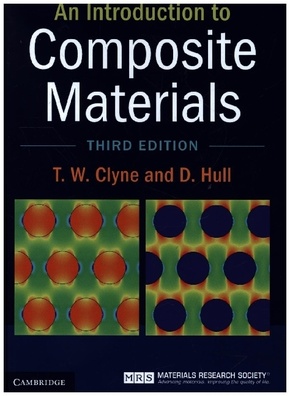An Introduction to Composite Materials
| Verlag | Cambridge University Press |
| Auflage | 2019 |
| Seiten | 360 |
| Format | 17,8 x 25,2 x 2,1 cm |
| Gewicht | 880 g |
| Artikeltyp | Englisches Buch |
| EAN | 9780521860956 |
| Bestell-Nr | 52186095EA |
A fully expanded and updated edition covering the underlying science and technological usage of composite materials.
This fully expanded and updated edition provides both scientists and engineers with all the information they need to understand composite materials, covering their underlying science and technological usage. It includes four completely new chapters on surface coatings, highly porous materials, bio-composites and nano-composites, as well as thoroughly revised chapters on fibres and matrices, the design, fabrication and production of composites, mechanical and thermal properties, and industry applications. Extensively expanded referencing engages readers with the latest research and industrial developments in the field, and increased coverage of essential background science makes this a valuable self-contained text. A comprehensive set of homework questions, with model answers available online, explains how calculations associated with the properties of composite materials should be tackled, and educational software accompanying the book is available online. An invaluable text for f inal-year undergraduates in materials science and engineering, and graduate students and researchers in academia and industry.
Inhaltsverzeichnis:
Preface; Nomenclature; 1. General introduction; 2. Fibres, matrices and their architecture in composites; 3. Elastic deformation of long fibre composites; 4. Tensor analysis of anisotropic materials and the elastic deformation of laminae; 5. Elastic deformation of laminates; 6. Stresses and strains in short fibre and particulate composites; 7. The interface region; 8. Stress-based treatment of the strength of composites; 9. Fracture mechanics and the toughness of composites; 10. Thermal effects in composites; 11. Surface coatings as composite systems; 12. Highly porous materials as composite systems; 13. Biocomposites and recycling; 14. Scale effects and nanocomposites; 15. Fabrication of composites; 16. Applications of composites; Appendix: questions; Index.
Rezension:
'This introductory textbook goes beyond the descriptive level and the usual engineering approximations to a deeper, yet accessible, level of fundamental composite mechanics that provides valuable insights into composite performance.' William Curtin, École polytechnique fédérale de Lausanne

